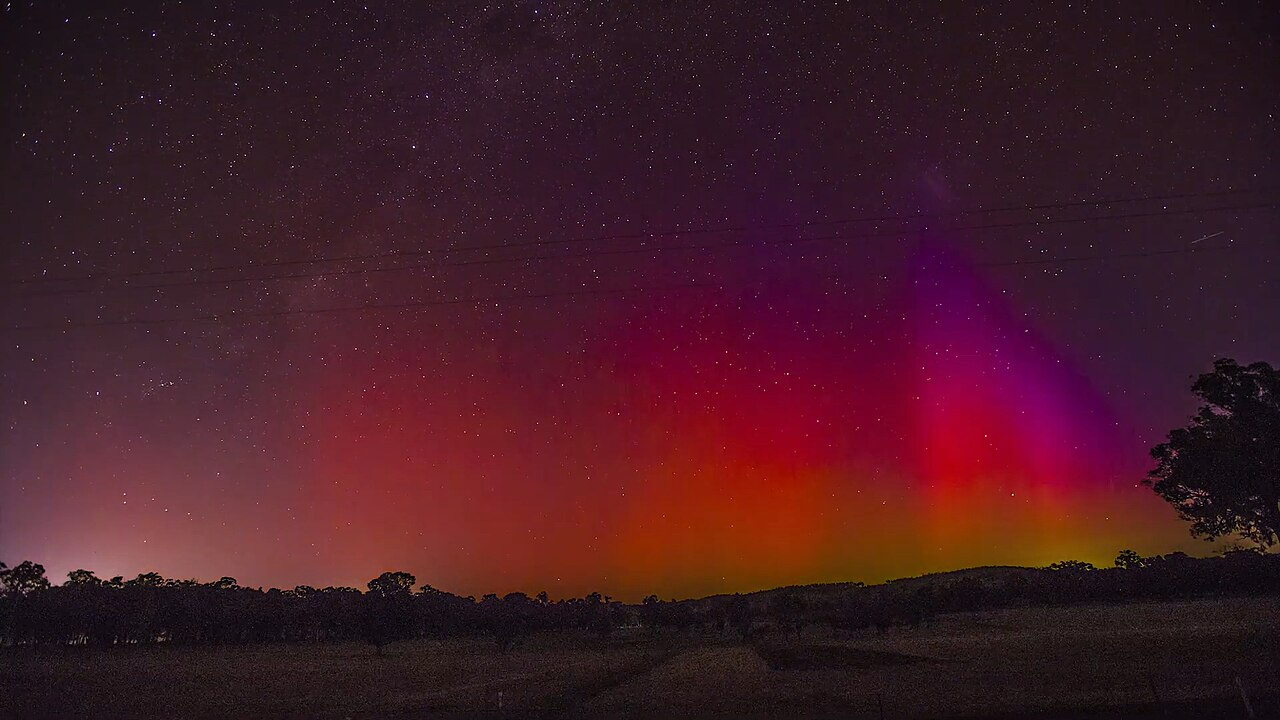The risk of a solar storm destroying power networks and submarine cables – and potentially even bringing down civilization – depends on the angle at which it hits the Earth’s magnetic field and the local time of night. Unsurprisingly, the strength of the incoming shock is also important, but new research emphasizes the influence of the angle at which an irregularity in the solar wind arrives. The work will improve predictions on which shocks will be most dangerous, allowing for mitigation measures to be put in place.
With the Sun at around the maximum of its cycle, the main effect most people have experienced has been beautiful auroras. A few radio communications have been disrupted, without substantial harm. However, the history of past events shows something much more serious is possible, and our technology makes us far more vulnerable than ever before.
Although auroras are ultimately a product of coronal mass ejections (CMEs) lifting plasma off the Sun, most CMEs cause no auroras, let alone damage. That’s because the vast majority of CMEs are directed nowhere near Earth – it’s a big Solar System out there and we are quite a small target. When something does hit the Earth’s magnetic field, most often it is at a substantial enough angle to produce a glancing blow, rather than a direct hit. This diminishes the power of the auroras, but since negative effects are rarer, we know less about how they are affected.
The reason CMEs have recently become a much greater threat is that they can produce currents in long stretches of conducting material. That didn’t matter when a spear was the longest piece of metal around, but modern electricity powerlines and pipelines are a different matter.
“Auroras and geomagnetically induced currents are caused by similar space weather drivers,” said Dr Denny Oliveira of NASA’s Goddard Space Flight Center in a statement to Frontiers News. “The aurora is a visual warning that indicates that electric currents in space can generate these geomagnetically induced currents on the ground.”
Most auroras are restricted to polar regions, but in May this year they were seen at latitudes of less than 30 degrees. Induced currents are also most common near the magnetic poles.

Even somewhere as far from the poles as Perth, Australia, got magnificent auroras in May.
Auroras are famously produced when particles from the Sun reach the Earth’s magnetic field, which bends their path towards the magnetic poles where they ionize atmospheric molecules. However, a secondary mechanism is squeezing of our magnetic field from so called “interplanetary shocks” caused by changes in density and temperature of the solar wind. It’s the latter component that produces the ground currents.
“Arguably, the most intense deleterious effects on power infrastructure occurred in March 1989 following a severe geomagnetic storm – the Hydro-Quebec system in Canada was shut down for nearly nine hours, leaving millions of people with no electricity,” Oliveira said.
Oliveira and colleagues compared the angles and times of day of 332 shocks striking between 1999 and 2023 with the currents induced in a gas pipeline in Mäntsälä, Finland.
The strongest currents (above 20 amps) were created when shocks struck most directly and around midnight when the magnetic north pole was between Mäntsälä and the Sun. Unsurprisingly, these coincided with strong auroras, but at this latitude auroras are far more frequent.
“Moderate currents occur shortly after the perturbation impact when Mäntsälä is around dusk local time, whereas more intense currents occur around midnight local time,” Oliveira said.
Shocks take days to travel from Sun to Earth, but we are unable to predict their arrival with much precision for most of that time, a matter of great frustration to aurora chasers.
However, according to Oliveira, the shock angle is sufficiently well-known two hours beforehand. That’s a lot more useful than the half an hour warning NASA has recently started providing.
Nevertheless, the data Oliveira and colleagues used didn’t reveal a strong relationship between the shock angle and the delay before the current was produced. Unless other methods can address this, infrastructure may need to remain in safe mode longer than would be ideal following each shock.
“Although Mäntsälä is at a critical location, it does not provide a worldwide picture. In addition, the Mäntsälä data is missing several days in the period investigated, which forced us to discard many events in our shock database. It would be nice to have worldwide power companies make their data accessible to scientists for studies,” Oliveira noted. This team might not be the first to discover that those concerned enough about the public good to share proprietary information seldom go into the fossil fuel business.
The study is published open access in Frontiers in Astronomy and Space Sciences.
Source Link: Head-On Aurora-Causing Solar Storms Are The Ones We Really Need To Worry About